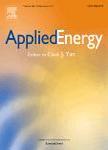版权所有:内蒙古大学图书馆 技术提供:维普资讯• 智图
内蒙古自治区呼和浩特市赛罕区大学西街235号 邮编: 010021

作者机构:North Carolina State Univ Elect & Comp Engn Dept Raleigh NC 27695 USA North Carolina Cent Univ Sch Business Decis Sci Dept Durham NC USA North Carolina State Univ Civil Construct & Environm Engn Dept Raleigh NC 27695 USA Univ Nevada Elect & Biomed Engn Dept Reno NV 89557 USA
出 版 物:《APPLIED ENERGY》 (实用能源)
年 卷 期:2019年第236卷
页 面:42-54页
核心收录:
学科分类:0820[工学-石油与天然气工程] 0817[工学-化学工程与技术] 08[工学] 0807[工学-动力工程及工程热物理]
基 金:FREEDM Systems Center Raleigh NC USA
主 题:Energy management Multi-stage stochastic programming Optimal storage sizing Sampling-based decomposition Solar energy Energy storage
摘 要:The aim of this paper is to propose a new energy management framework and storage sizing for a community composed of multiple houses and distributed solar generation. Uncertainties associated with solar generation and electricity demand are included to make the mathematical models more realistic, and as a result, provide more accurate control strategies to manage storage devices utilization. To evaluate that, a multi-stage stochastic program model designed to minimize community electricity purchase cost per day is used to support decision-making by creating control policies for energy management. Two different strategies are created to represent the interest of a single household (the individual energy management - IEM) and households that share their assets with the community (shared energy management - SEM). Our strategies consider time-of-use rates (ToU), load and resource variation during different seasons, with their distinct days of the year, to calculate net present value (NPV) associated with the energy savings. IEM and SEM are then used in a framework designed to establish the requirement of optimal energy storage size for each house of the community based on NPV values. The results of this study for an analysis considering a community with five houses show that the proposed SEM strategy reduces the overall electricity purchase costs for a summer day up to 11% and 3% compared with heuristic and IEM control respectively. Moreover, our results suggest that the application of the methodology increases peak energy savings up to 17%, scales up solar generation usage up to 23%, and the optimal storage size obtained in the shared community case reduces up to 50%.